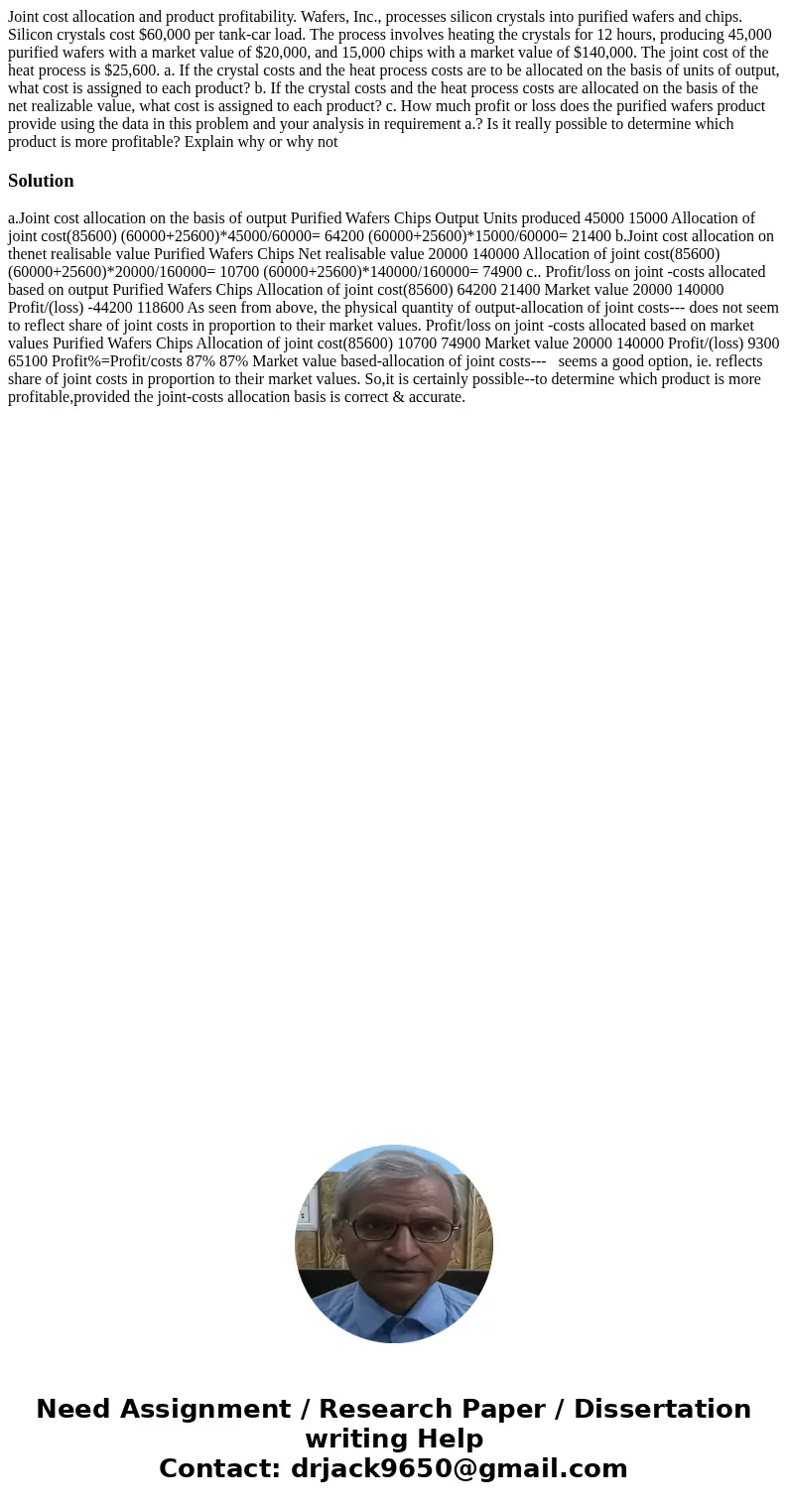Joint cost allocation and product profitability Wafers Inc p
Joint cost allocation and product profitability. Wafers, Inc., processes silicon crystals into purified wafers and chips. Silicon crystals cost $60,000 per tank-car load. The process involves heating the crystals for 12 hours, producing 45,000 purified wafers with a market value of $20,000, and 15,000 chips with a market value of $140,000. The joint cost of the heat process is $25,600. a. If the crystal costs and the heat process costs are to be allocated on the basis of units of output, what cost is assigned to each product? b. If the crystal costs and the heat process costs are allocated on the basis of the net realizable value, what cost is assigned to each product? c. How much profit or loss does the purified wafers product provide using the data in this problem and your analysis in requirement a.? Is it really possible to determine which product is more profitable? Explain why or why not 
Solution
a.Joint cost allocation on the basis of output Purified Wafers Chips Output Units produced 45000 15000 Allocation of joint cost(85600) (60000+25600)*45000/60000= 64200 (60000+25600)*15000/60000= 21400 b.Joint cost allocation on thenet realisable value Purified Wafers Chips Net realisable value 20000 140000 Allocation of joint cost(85600) (60000+25600)*20000/160000= 10700 (60000+25600)*140000/160000= 74900 c.. Profit/loss on joint -costs allocated based on output Purified Wafers Chips Allocation of joint cost(85600) 64200 21400 Market value 20000 140000 Profit/(loss) -44200 118600 As seen from above, the physical quantity of output-allocation of joint costs--- does not seem to reflect share of joint costs in proportion to their market values. Profit/loss on joint -costs allocated based on market values Purified Wafers Chips Allocation of joint cost(85600) 10700 74900 Market value 20000 140000 Profit/(loss) 9300 65100 Profit%=Profit/costs 87% 87% Market value based-allocation of joint costs--- seems a good option, ie. reflects share of joint costs in proportion to their market values. So,it is certainly possible--to determine which product is more profitable,provided the joint-costs allocation basis is correct & accurate.
 Homework Sourse
Homework Sourse